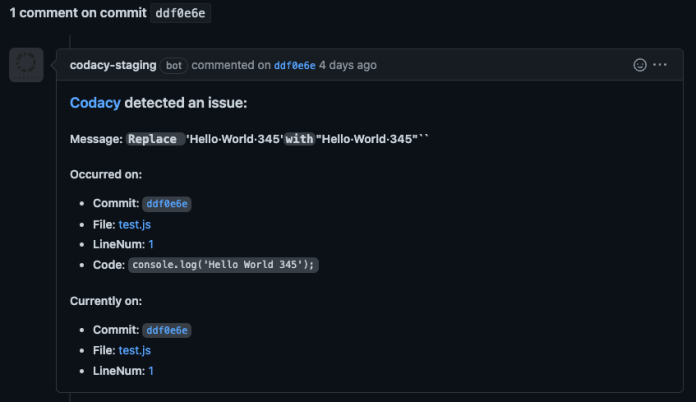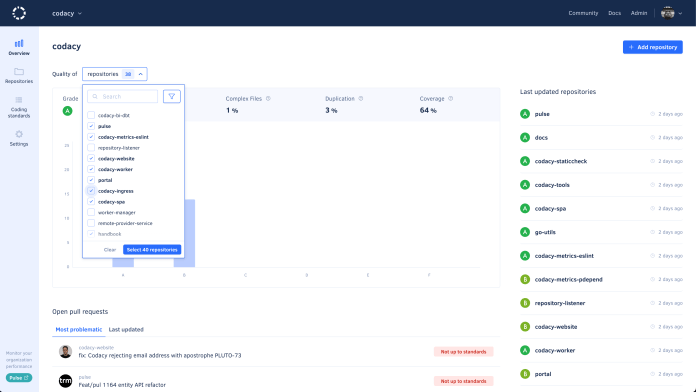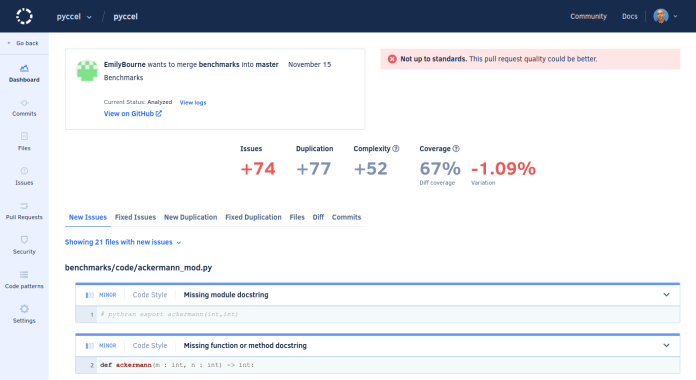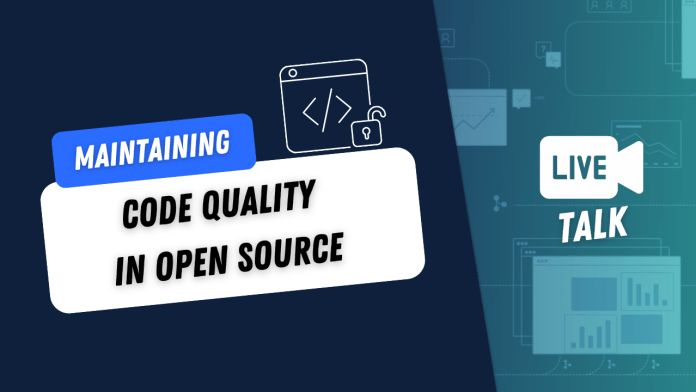
Hi there 👋,
Welcome back to work, if that’s the case! We hope you had an amazing time over the holidays and you came back fresh and ready to start a brand new month 🎉
Here are a few updates from August that we’ve been working on. There’s also a new webinar that you don’t want to miss, so keep on reading!
GitHub analysis will not stop if the integrator leaves
When a user that integrated a repository left or lost access to a repo, the analysis would stop working. This was far from ideal, right?
Now, if the integrator leaves, you’ll still be able to:
- Receive suggested changes on your PR;
- Create comments on issues (only for public repos) from Codacy;
- Open issues on Github from Codacy;
- Create push hooks, and check if they exist;
- Receive emails with analysis results.
Plus, the features show that Codacy performed the activity, not a user, which you’ve been asking for a while!
Note: The analysis will stop working if the user removes their account from Codacy or GitHub.

Filtering repositories in the organization overview
Were you tired of seeing your entire list of repos every time you entered the Codacy dashboard? Well, we’ve good news for you: it’s now possible to filter repositories in the organization overview!
What does it mean for you:
- Narrowing the number of repos you see in your organization dashboard will help you focus on what matters most.
- You can also filter repos by programming language, narrowing the scope of what you see even more.
- The repo selection is stored per user (in-browser), so when you’re back, your selection will be there, waiting for you.

Decimal points in Coverage
We know Coverage didn’t have enough granularity, which could be deceiving. A 1% change, in particular in big repos, is a lot of variation, and we were not showing that.
We’ve listened to you, and we’ve improved the granularity of coverage by showing decimal points!
Here’s what it means for you:
- Each file now has more granularity on the coverage variation metric, showing 80.75% instead of just 80%, for example.
- On the Pull Request and Commit views, you’ll see decimal places for the Coverage variation metric;
- If you have a quality gate of -2% and a coverage variation of -2.45%, for example, Codacy will now be able to fail this check. Before this feature, -2.45 would be rounded to -2, and the quality gate would pass.

Next Webinar: Become a Code Review Master with Curtis Einsmann

Join our guest speaker to learn how to improve your code review process!
Curtis Einsmann is a software engineer at Gumroad, previously 6 years at Amazon, who recently created the Master the Code Review course to help you write better code, give better reviews, and forge a better code review process. Let’s have an open talk and share our questions!
Live talk recap: Maintaining Code Quality in Open Source with Niels Lohmann

We had a live talk with the guest speaker Niels Lohmann, founder of JSON for Modern C++ on GitHub, about maintaining code quality in an open-source project that keeps growing.
In case you missed the talk, don’t worry, you can (re)watch the recording here. Short on time? Check out the highlights from the talk in our blog.
Careers at Codacy: We’re Hiring 🤩
We’re hiring for our Engineering (Backend, Frontend, SRE), Product, Customer Success, Sales, Marketing, Support, and People Teams. All remote positions – join us from anywhere in Europe and help us do awesome things! Check our current openings.
Interesting reads
Code reviews: the essential guide [ebook] 📚
Code reviews are one of the most important aspects of today’s software development workflow. That’s why we created a guide that explains in detail what code reviews are and how to optimize them. We even give you checklists to help you become the best code reviewer you can be. Read the ebook →
“This Is How To Start in Quality Engineering (Methods)” by QE Unit 🤓
Do you want to know what you need to start with Quality at Speed software? Quality Engineering will help you get started. Its implementation depends on the 5 domains of MAMOS: Methods, Architecture, Management & Culture, Organization, and Skills. Let’s start with Methods →
“My Top Takeaways From Refactoring: Part 1” by Recep İnanç 📖
“As software developers, we should embrace change. Frameworks change, requirements change, expectations change… Incorporating those changes into the existing code base is not always easy. But, writing clean and well-structured code will make it easier for your future self. (…) I would like to share my top takeaways from the book Refactoring by Kent Beck and Martin Fowler.” Keep reading here →
“How To Use Technical Debt In Your Favor” by Fagner Brack 👨💻
We all know that technical debt is inevitable. However, did you know that you can use it in your favor? But, to do that, your team needs to be aligned, collaborative and disciplined. Learn more →
Community
We are almost 550 members in our community! 🚀
Your support and feedback are very important to us, and we look forward to keep growing and learning with you. Thank you all 🙌 👫

Give feedback on our Roadmap
We’d like to continue sharing our roadmap with you ✨ You can see what’s in progress, and what’s up next. You can also submit an idea/feature request and vote on what is most important! Your feedback matters 💪
If you think this content is relevant to you we would be extremely happy to send it over to you every single month. Feel free to subscribe below and welcome on board! ⛵
.svg)


